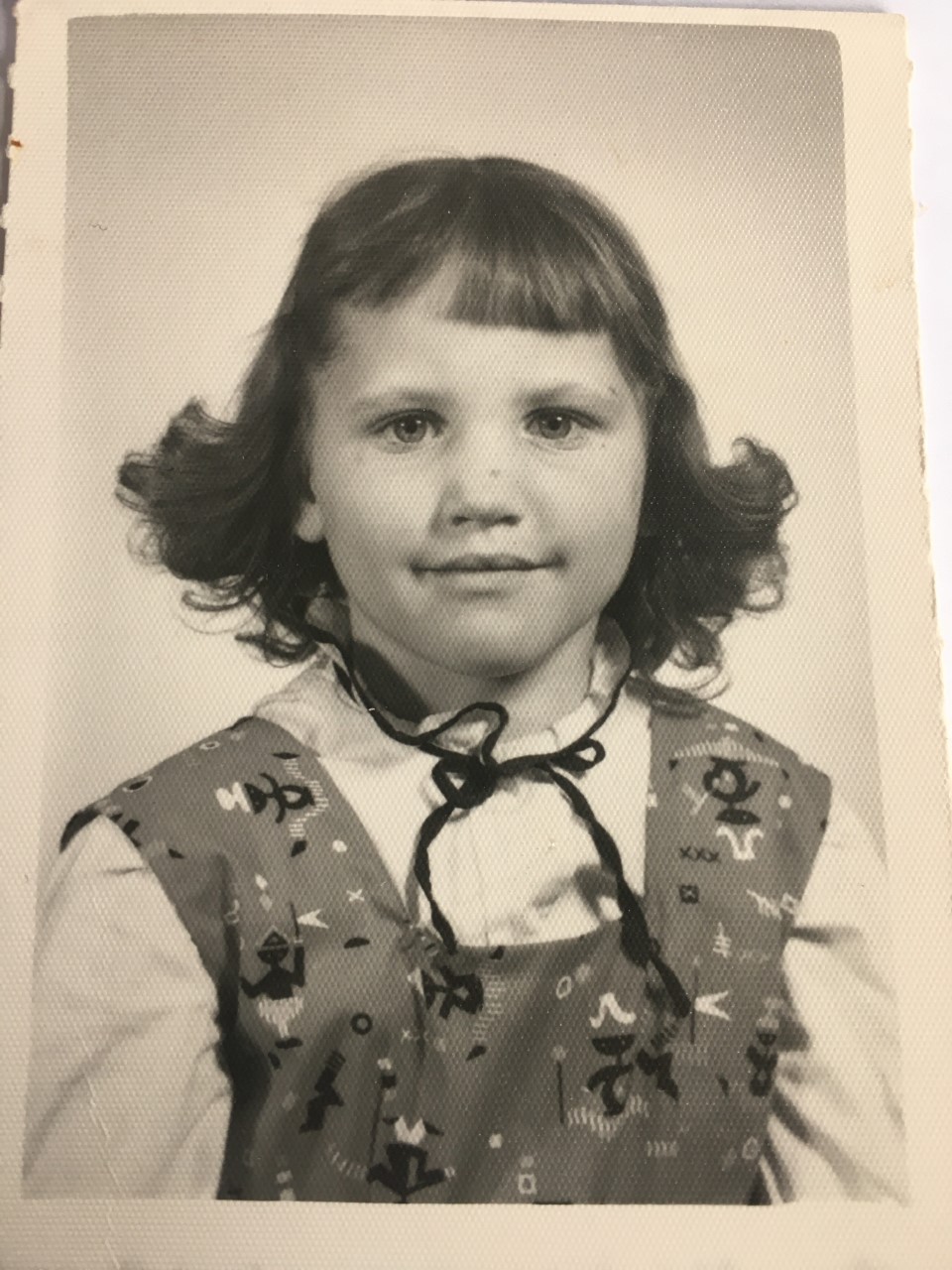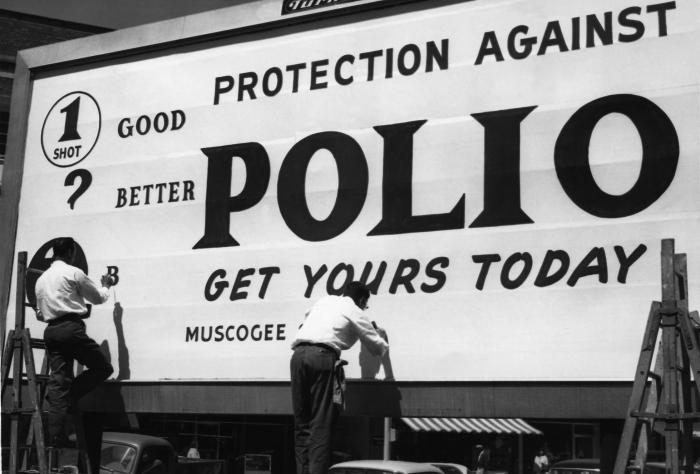The COVID-19 virus has quickly spread across the globe, causing half a million cases and nearly 40,000 deaths. In the U.S., we’ve seen over 160,000 reported cases as of March 30, and the actual number is likely much higher. Disease is spreading rapidly, and health systems are struggling to keep pace. Across the country, non-essential businesses are being required to shut their doors, schools are closing—some for the remainder of the school year—, and state governors are issuing Stay-At-Home orders requiring that people not leave their homes unless absolutely necessary.
We are living in a new and uncertain reality. But to many, the fear and uncertainty surrounding COVID-19 is familiar. This is not the first time our society has experienced a pandemic like COVID-19; it is not the first time that people have been afraid to leave their homes, or that healthcare workers have struggled to keep pace with the number of cases.
One such historical example is polio. Beginning in the early- to mid-1900s, polio epidemics popped up across U.S. communities. At the time, researchers and scientists weren’t exactly sure what caused polio or how it spread, and there was no known prevention measure or cure. We now know that polio is caused by the poliovirus and spreads from person to person through contact with feces or droplets from a sneeze or cough of an infected person. In some cases, polio can result in infection of the spinal cord, causing paralysis and sometimes death. Those who don’t show symptoms can still be infected and spread the virus to others. Thankfully, the U.S. declared polio eradicated in 1979; however, some parts of the world still see small numbers of polio cases each year.
Out of fear that their children might contract it and become paralyzed, parents in the 1940s and 50s were understandably scared to let them leave the house. In many communities, public places like schools, pools and movie theaters shut down in attempts to stamp out the virus. Public health officials even imposed quarantines on households and towns where there were diagnosed cases of polio. In an interview with Immunize Colorado, polio survivor and Colorado native Lois Tilley remembers the effects—some lifelong—that polio had on her and her family, and recalls the overwhelming relief her parents and the public felt when there was finally a vaccine to protect against it.
When and how did you contract polio?

Lois Tilley, age 6
I contracted polio in 1952 when I was just seven months old. In August of that year, my parents took me and my older brother to Kansas for a wedding anniversary celebration, and they believe that’s where I was exposed and contracted it. I spent 21 days at the Colorado Children’s Hospital being treated. My family worked as farmers and lived on the Eastern plains. In those days, travel was a lot more difficult, so it was hard for them to come all that way to visit me. Thankfully I had a relatively mild case and recovered, with residual effects being limited to just my left arm. For other survivors, polio affected their whole body; I feel fortunate it only affected my arm.
What was it like for your parents to have such a young baby with polio?
They didn’t talk about it much when I was growing up, but it was hard for them, especially the physical therapy that came after. How do you tell an eight-month-old baby to resist or pull? Luckily, growing up on a farm, there was a lot of physical activity that I could do as I got older to develop some movement in my arm, and over time my hand became quite functional. I learned to use my right hand to put my left hand where it needed to be to hold things. I think my family was grateful, as I am, that my case wasn’t more severe and didn’t cause more debilitating injuries.
How did polio affect your childhood?
In my small town sports were a big deal and almost everyone played them. Because of the limitations in my arm, I couldn’t really play any sports. In that aspect, I always felt very excluded. I always felt, and I thought others assumed I was, very clumsy and a klutz. Because I was only limited in my arm and hand, it wasn’t immediately obvious to others that I had a disability. In my youth there wasn’t anyone my age who’d had polio in the small school I attended so I never told anyone about it; my brothers didn’t even know until I was much older. As I got older, though, I met more people who’d been affected by polio. I even met a polio survivor whom we figured out may have been at Children’s Hospital at the same time I was.
How has polio affected your life as an adult?
There are many day-to-day activities that I must modify because of the limited use of my left arm and hand. For instance, I can’t do much with my hair because my arm doesn’t go up to my head; I’ve had to find hair appliances that can be used with just my right hand. Small things like putting on a coat take a few extra steps to do—I have to get my arm in the right position. When I do yoga, I have to modify any poses or stretches that require the use of two arms. I’ve just had to find ways to do things differently—things that most people don’t think twice about. My right arm is starting to suffer now, too, from years of overuse. While I’ve certainly been impacted by polio, I also think about those who had to be in iron lungs for years or who were paralyzed and had trouble moving around. Polio was truly devastating for so many people.

Workers creating a billboard in Columbus, Georgia to promote awareness for polio vaccination. Image source: Centers for Disease Control and Prevention (CDC).
The polio vaccine came out in 1955. What do you remember from that year?
Because I was only three in 1955, I don’t remember a lot, but I’m told everyone was incredibly happy. Almost everyone knew someone who was impacted by polio, so there was this collective overwhelming relief. At school I remember people passing out sugar cubes, which had the vaccine inside them, and I remember taking one along with my classmates even though I’d already had polio. People were making certain that their kids got the vaccine as soon as possible. My parents got it for my siblings as soon as they could.
What would you say to someone who might be hesitant to give their child a vaccine (for polio or another disease)?
I became a grandmother in January and one of the first things I confirmed with my son and his wife was if they planned on getting their son immunized. They immediately said “YES.” My son has always been very aware of my limitations from polio. To anyone hesitating to vaccinate their child, I would emphasize that there are huge, potentially life-altering risks to not getting vaccinated and that the benefits of vaccines over time have been incredible. I think people often forget what things were like before vaccines—diseases are almost invisible now because vaccines have worked so well. If people could see just how scary polio and other diseases were, they would take vaccination much more seriously. Polio isn’t completely eradicated, and it could very well come back.
What lessons can we apply to COVID-19 from our nation’s experience with polio?
Something that cities inundated with polio cases during big outbreaks did was to socially isolate people by closing public gathering places. Families kept their children inside and away from others. Kids were not allowed to play with other kids, go to playgrounds or swim at public swimming pools. This concept of social distancing is important for COVID-19, too, to help slow the spread, and I’m thankful that leaders are taking measures to make sure we’re all staying as isolated as possible. Those who are currently on the front lines of this response are taking huge risks for the rest of us, so we need to do our part for them.
Many diseases that have caused large-scale outbreaks and pandemics in the past (like polio, measles, influenza and pertussis) are now prevented with vaccines. COVID-19 gives us a glimpse of what life was like before vaccines—when immunity could only be attained by getting the disease, which also meant there was risk for serious complications. That’s why, until a vaccine becomes available, social distancing is the best way to fight COVID-19 and slow it’s spread.
For more information on COVID-19 in Colorado, visit the Colorado Department of Public Health and Environment COVID-19 website. You can also access additional information on the Immunize Colorado COVID-19 webpage.
